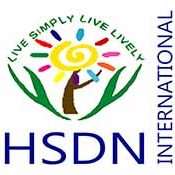Sustainability in Newfoundland Recreation Fishing
For many people in the province of Newfoundland, angling is not only an enjoyable pass-time, but a means of survival. For hundreds of years the island’s salmon, trout, and cod stocks have been a source of food, income, and pleasure for many. However, due to a number of factors, some of these once abundant stocks of fish have fallen dangerously low.
That has became the case for many of the salmon populations inhabiting the islands numerous rivers. Due to the increase in popularity of the recreational salmon fishery, as well as a lack of regard (by some few) for crucial regulations, the number of salmon returning to some rivers has been steadily decreasing for years. This has left organizations such as the Salmonid Association of Eastern Newfoundland (SAEN) scrambling to help save the beloved salmon population. Their goal is to re-establish and/or maintain a comfortable degree of sustainability for salmon populations on the island.
One of SAEN’s most recent projects is the restoration of the Rennie’s River system. Located on the Avalon Peninsula in eastern Newfoundland, the river has one of the lowest salmon counts on the island. Due to pollution, dense population, and other geographical challenges, the salmon inhabiting this system have been virtually destroyed. This poses a problem as salmon help maintain natural balance and food chain in the ecosystem. SAEN’s mission became to reintroduce salmon to the system, as well as promote and educate the local population about what was happening there, in an attempt to help reduce pollution and promote sustainability for the system and it’s inhabitants. First, they gathered volunteers to clean the river and make is suitable for salmon to spawn their offspring. Secondly, SAEN installed a “salmon ladder”, which involved drilling rock along the rivers waterfalls to allow salmon easier navigation through them. The third and ongoing phase is the education of the local population. SAEN is attempting to educate locals about the work they have done, and what needs to be done by everyone to make sure salmon can thrive in the area. By reducing things like littering, dumping, and otherwise polluting the rivers waters the salmons survival rate increases greatly. However, to do this, everyone must pitch in and do their part.
So far, the project has been received with relative success. Young salmon have been successfully reintroduced to the river system and seem to be taking to it. Only time can tell how well or for how long this will last. One of the most serious threats to this projects future is pollution. With a large portion of the river system propped in the heart of Newfoundland’s capital St. John’s, how can an organization such as SAEN insure its sustainability? Of course, the best way to do this comes from education. If we can educate the local population, we can teach them the importance of the salmon in the sustainability of the river system, and the entire areas ecology. Perhaps then things like pollution and river destruction won’t be such an issue, if people see the bigger picture.
This one river system can be looked at as a pseudo-model for the entire recreational salmon fishery in Newfoundland. The same problems SAEN faces in Rennie’s River are also present, to some degree, in every river on the island. If simple education could help with so many of these issues, sustainability for salmon in Newfoundland should be an easy task. But its not. Unfortunately, educating such a vast population of fisherman isn’t easy, especially when many of whom are stuck in their traditional ways of poaching salmon, not catching-and-releasing, or otherwise doing harmful acts in/around our rivers. Furthermore, if education can and is playing such a successful and key role in the example of Rennie’s River, we can see how education can aid sustainability on a a much larger scale.
In conclusion, in order to maintain sustainability on any level, I believe a key factor is education and cooperation. These are things WWHSDC strives to promote. Which is why I find myself submitting to this blog, perhaps my words here will help sustain, in some way, a small but important part of the heritage of Newfoundlanders. If we can all see the bigger picture, and look at Rennie’s River as a model for our earths precious environment, perhaps we can understand how important small individual contributions are to sustainability on a global level.
